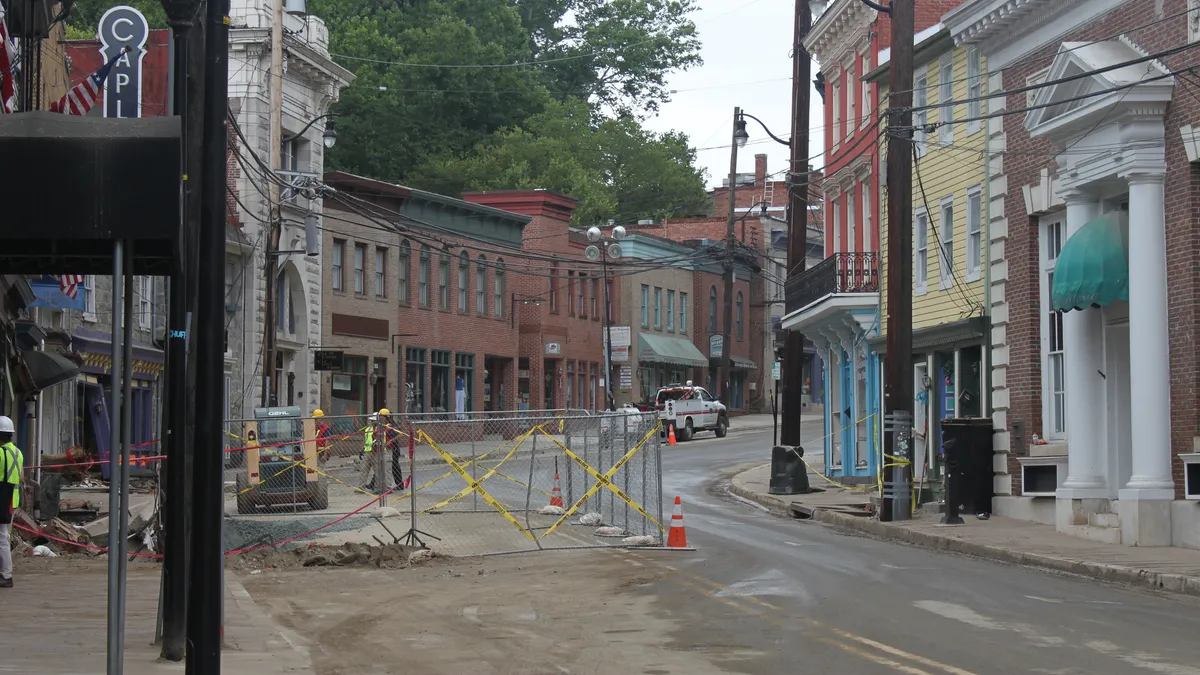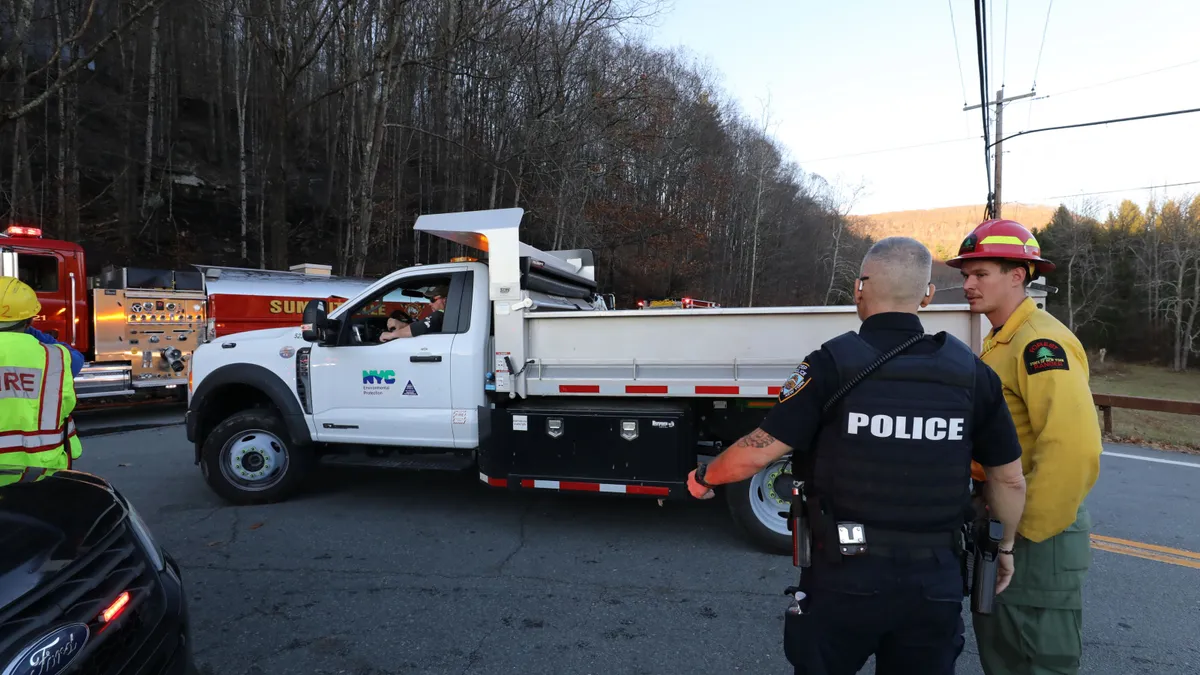This weekend’s floods in Ellicott City, MD resulted in significant damage to the city’s Main Street and called into question how quickly local leaders have developed flood resiliency less than two years after similar floods wreaked havoc.
The flooding, caused by more than eight inches of rain in about five hours last Sunday, resulted in the death of a man who tried to rescue people. They also contributed to a burst sewage main, which led officials in Howard County to issue a "precautionary health alert."
WTOP reported only 30% of the recovery work from the 2016 flooding incident had been carried out before the latest storms, with efforts like rebuilding stonewalls lengthening many project timelines. Howard County officials also proposed $17.1 million in the county’s fiscal year 2019 capital budget for flood mitigation, including storm drain improvements and the design of stormwater retention facilities. Officials with Howard County did not respond to Smart Cities Dive’s requests for further comment, but the budget is set to be adopted on Thursday by the Howard County Council.
Howard County officials joined representatives from the U.S. Department of Homeland Security (DHS) and National Weather Service (NWS) at a press conference on May 21 — six days before the devastating storm — to unveil a partnership to improve Ellicott City’s flood warning systems. The group announced the installation of 48 sensors at 16 locations throughout the Tiber-Hudson watershed, which feeds into the Patapsco River that runs through Ellicott City, to improve flood warning systems.
The sensors will be in place for six months, then could move outside the watershed to track more areas of concern. Howard County Executive Allan Kittleman said at the press conference the data collection will help close the county’s "information gap" on flooding. "We have made a lot of progress since July 30, 2016 to make Ellicott City more resilient to future storms,” Kittleman added.
And according to a factsheet prepared by the county, Ellicott City has either finished or planned several other flood mitigation projects. The Ellicott City Recovery Community Advisory Group formed to help early recovery work, and county figures show 72% of households displaced by the 2016 floods had returned to their homes, while 96% of businesses on Main Street had reopened. Similar figures following this latest storm are unclear.
The county listed 15 flood mitigation projects that had been completed, including rebuilding stream walls, repairing erosion and cleaning the streams of large debris. But there are many more projects in the design process or in need of further evaluation, including building stormwater retention facilities and enlarging pipes, in addition to more stream wall repairs and reforming stream channels.
Included in the proposed FY19 operating budget is a pilot floodproofing incentive program for homeowners and businesses. The U.S. Army Corps of Engineers completed a study in March with recommendations on floodproofing, from small suggestions like moving valuables out of basements to large ones like elevating a building’s foundations.
"It is important for the public to know that flood proofing would not have prevented the damages sustained during the flood this summer,” Stacey Underwood, floodplain management services program manager for the U.S. Army Corps of Engineers, Baltimore District, said in a statement when the study was announced last year. “However, certain flood-proofing measures may reduce flood risk during less severe floods."
But some in the community appear to be less than convinced by local efforts. On the Historic Ellicott City, MD website, which gives visitors hints about businesses, shops and restaurants to visit, organizers said there "needs to be some accountability from the Planning & Zoning members of the government instead of patting themselves on the back for a job well done!" The group did not respond to Smart Cities Dive’s requests for additional comment.
These latest floods will mean more costly rebuilding work for Ellicott City residents and businesses and more strain on local finances, even with possible help from the likes of the Federal Emergency Management Agency (FEMA). Before this latest storm hit, officials had stressed they are moving in the right direction. "We are far from being where we want to be, but we are on a path to get there," Howard County Councilmember Jon Weinstein said at the press conference earlier this month.



















